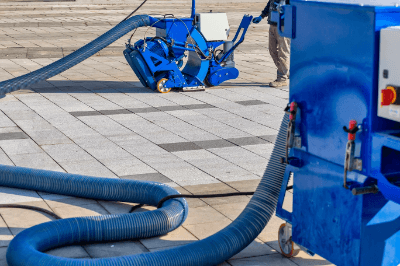What Is a Small Dust Collector?
 A small dust collector is a small and easily accessible dust collector for collecting dust.
A small dust collector is a small and easily accessible dust collector for collecting dust.
They are used in homes and workshops. They are especially useful for woodworking, metalworking, DIY projects, and other tasks that generate a lot of dust and debris. Small dust collectors can be used to reduce the spread of dust around and improve the cleanliness and safety of the work area.
Small dust collectors are compact and can remove dust more locally than general ventilation systems. Products such as mobile dust collectors and small dust collectors with dust collection bags exist. Many types can be easily moved and installed, and the optimal small dust collector can be selected depending on the work procedure and process.
However, small dust collectors may have limited suction power and capacity compared to full-scale dust collectors. When handling large amounts of dust or heavy refuse, it is necessary to consider a dust collector with a larger capacity or higher performance.
Applications of Small Dust Collectors
Small dust collectors are useful in a variety of fields:
1. Woodworking
Small dust collectors are very useful in woodworking, where wood cutting and shavings are frequently generated. By effectively collecting wood chips and dust, the dust collector keeps the work area clean and prevents dust from being dispersed into the surrounding environment.
2. Processing Work
Processing work, such as metal cutting and grinding, generates metal dust and chips. Small dust collectors can be used to collect these dusts and debris efficiently. In addition, metal dust can be hazardous to health, so using a dust collector is part of improving worker safety.
3. DIY at Home
Small dust collectors are also useful for DIY projects at home. They can effectively collect dust and debris from woodworking, metalworking, and other operations. This helps maintain the cleanliness of the work area and surroundings, improving work efficiency and safety.
Principle of Small Dust Collector
A small dust collector consists of the following elements:
1. Motor
A motor is used to generate suction power. The motor usually receives power from a power source to generate rotational force. This rotational force drives the suction fan or blower unit to move air.
2. Suction Fan/Blower Unit
A suction fan or blower unit, driven by a motor, is responsible for sucking or blowing air. It generates a stream of air and generates a force that draws in dust and debris.
3. Filter
Filters are equipped to collect dust and debris in the sucked air. They have a microscopic hole or mesh structure that allows air to pass through while capturing dust and debris. The type of filter varies by model, but cloth bag filters or filter cartridges are commonly used.
4. Catch Container
Once dust and debris are collected by the filter, there is a catch container to hold them. Catch containers are generally removable and the contents can be periodically removed for cleaning. The capacity of the container varies by model, but may be limited compared to larger dust collectors.
5. Frame
This is a structure used to hold components such as motors and fans. It is generally made of durable materials such as plastic or metal. It may also have convenient features, such as handles and hose connections.
How to Select a Small Dust Collector
When selecting a small dust collector, select one based on its filter, portability, and suction power.
1. Filter Type
Small dust collectors come in a variety of filter types, including bag filters and filter cartridges. It is important to select the filter type according to the type of dust and debris to be inhaled. Ease of cleaning and replacing filters should also be considered.
2. Portability
Small dust collectors are often used while moving around, so portability is important. A lightweight, compact design makes it easy to change the location of use and move the dust collector. Products with features that make them easy to carry and operate, such as handles and casters, are also available.
3. Suction Power
Suction power is an important indicator for evaluating the performance of a dust collector. The stronger the suction power, the more effectively it collects dust and debris. Suction power is determined by the design of the motor and fan.